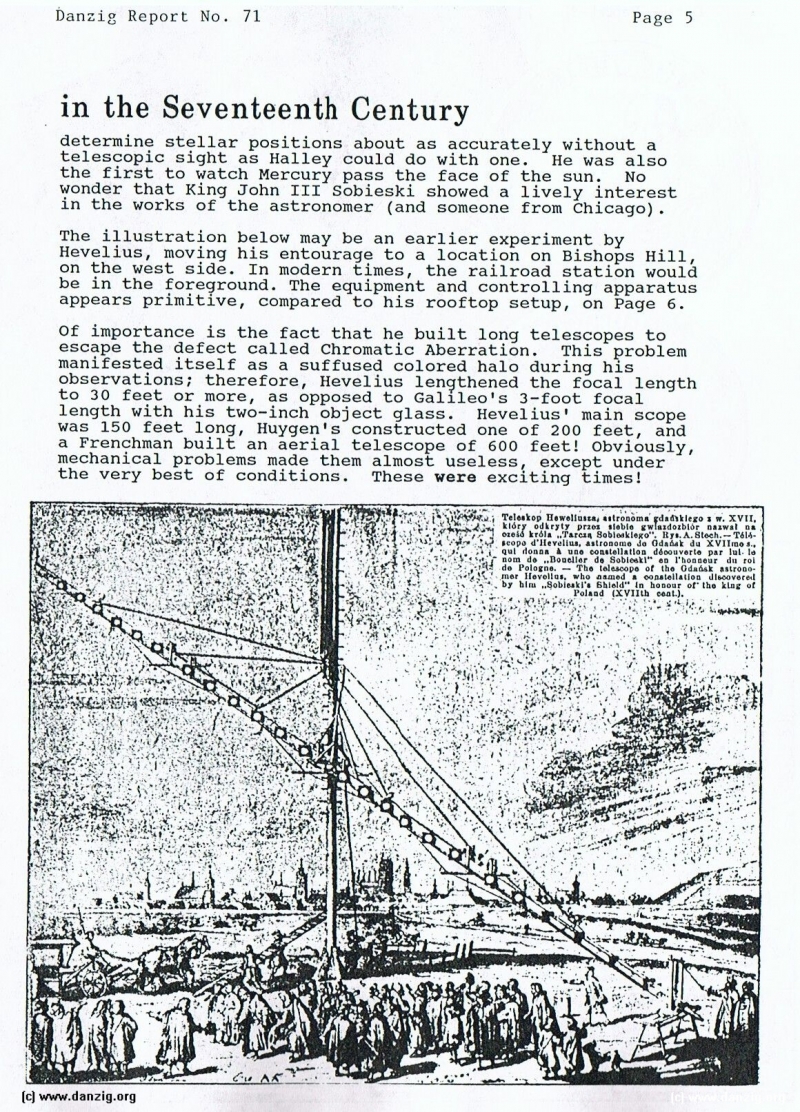
in the Seventeenth Century
determine stellar positions about as accurately without a telescopic sight as Halley could do with one. He was also the first to watch Mercury pass the face of the sun. No wonder that King John III Sobieski showed a lively interest in the works of the astronomer (and someone from Chicago).
The illustration below may be an earlier experiment by Hevelius, moving his entourage to a location on Bishops Hill, on the west side. In modern times, the railroad station would be in the foreground. The equipment and controlling apparatus appears primitive, compared to his rooftop setup, on Page 6.
Of importance is the fact that he built long telescopes to escape the defect called Chromatic Aberration. This problem manifested itself as a suffused colored halo during his observations; therefore, Hevelius len9thened the focal length to 30 feet or more, as opposed to Galileo’s 3—foot focal length with his two—inch object glass. Hevelius’ main scope was 150 feet long, Huygen’s constructed one of 200 feet, and a Frenchman built an aerial telescope of 600 feet! Obviously, mechanical problems made them almost useless, except under the very best of conditions. These were exciting times!
Danzig Report Vol. 1 - Nr. 71 - April - May - June - 1991, Page 5.
Hits: 3599
Added: 30/06/2015
Copyright: 2025 Danzig.org

